Courtesy: Alyssa Coons DPT, OCS, CSCS
Disclaimer: This is not medical advice.
Have you ever experienced shoulder pain from swimming? It’s not surprising– anywhere between 40-90% of swimmers will report some type of shoulder pain throughout their career. Want to know why? Swimmers, on average, can perform 30,000 rotations of each shoulder per WEEK in the pool. That number can be more depending on training frequency. That puts a significant amount of stress on the shoulders which accounts for 90% of the forward propulsion in swimming.
Here are 3 major possible contributions for increased pain in the shoulder for swimmers:
1. Differing stroke mechanics can lead to increased shoulder pain when performed repetitively. Any part of the stroke where the arm is placed overhead and towards/crossing the midline of your body, can increase stress in the shoulder. You want to have enough rotation throughout the body to avoid increased midline crossing of shoulders.
Tips:
- Avoid entering the water with your thumb leading in freestyle and avoid crossing over midline of body with hand entry
- Proper rotation throughout body will help decrease stress on shoulder
2. Sufficient flexibility of shoulders is key to meet the demands of the sport, requiring the arms to go into full overhead positions, repeatedly. Lack of flexibility can lead to overuse injuries. To determine if you lack proper mobility, perform this simple test the ‘wall angel’. Make sure you can perform fully and without pain/discomfort.
WALL ANGEL
- Perform while seated with your back flat against a wall and legs bent. Start with your arms at shoulder height in a “field goal” position. Next, raise your arms overhead (as shown) while maintaining complete contact of arms and back against the wall.
If you were not successful in wall angel, add these mobility exercises to your accessory work/dryland, add these mobility exercises to your accessory work/dryland:
Thoracic Extension with Lat bias
- Start in a kneeling position and place your elbows on a box or bench in front of you. Hold a PVC pipe or similar material (broomstick) palms facing toward you. Next, lower your chest toward the ground and maintain a bent elbow position until a stretch is felt. Hold for a few seconds, perform 10-15 times.
Prone PVC Flexion
- Start by laying on your stomach holding a PVC pipe or band. Raise your arms in a “Y” position. Next, lift your shoulders off the ground, maintaining a neutral neck and wrist position, and keeping your elbows locked out. Hold for 10 seconds. Repeat 10 times.
Supine Overhead Ys
- Anchor a band to a pole/wall/door in front of you at waist height. Lay on your stomach with your legs bent in 90/90 positions. Keep your low back in contact with the ground throughout the entire exercise. While holding onto the band, raise your arms overhead in a “Y” formation. The goal is to contact your arms to the ground without compromising your core position. Perform 15 repetitions 2-3 times.
3. Sometimes swimmers can have too much mobility and insufficient stability in their shoulders. Due to the high range of motion demands of the shoulder throughout swimming, some swimmers may be prone to too much laxity. Increased mobility is good, due to sport demand, but it needs to be controlled! You have small stabilizing muscles around the shoulder that can help protect your joint. If you have had your shoulder flexibility assessed and have good range of motion, then stability may be your issue.
Did you pass the wall angel test but still have pain? Try these strengthening exercises in your next dryland workout:
Sidelying external rotation
- Lay on your side holding a light weight. Keep your arm at your side with your elbow bent to about 90 degrees. Rotate your hand towards the ceiling without rolling your shoulders or body. Lower down slowly to starting position. Keep your elbow bent to 90 degrees during the entire movement. Repeat 15 repetitions, 2-3 times.
Serratus wall slides
- Face a wall with a band looped around both of your wrists with thumbs pointing towards you. Start with your hands at shoulder height, keep tension in the band while raising your arms overhead. Hands should track outward into a “Y” position. Slowly lower back to the starting position. Your elbows should not flare outward. Perform 15 repetitions, 2-3 times.
Alternating shoulder taps
- Start in a plank position. Next, lift one arm and tap the opposite shoulder. Do not allow your body to rock and do not allow your shoulders to dip. Repeat alternating arms. Perform slow and controlled. Perform for 30 seconds, repeat 3-5 times.
THIS IS NOT MEDICAL ADVICE, IF YOU ARE EXPERIENCING PAIN PLEASE VISIT YOUR LOCAL DOCTOR OF PHYSICAL THERAPY OR PRIMARY CARE PHYSICIAN.
Citations:
- Heinlein SA, Cosgarea AJ. Biomechanical Considerations in the Competitive Swimmer’s Shoulder. Sports Health. 2010;2(6):519-525. doi:10.1177/1941738110377611
- Wanivenhaus F, Fox AJ, Chaudhury S, Rodeo SA. Epidemiology of injuries and prevention strategies in competitive swimmers. Sports Health. 2012;4(3):246-251. doi:10.1177/1941738112442132
 ABOUT ALYSSA COONS
ABOUT ALYSSA COONS
Alyssa graduated from College of Charleston in 2015 with a major in Exercise science. She was a member of the college’s D1 swim and dive team where she competed in 100 and 200 butterfly. She earned her doctorate in physical therapy from Nova Southeastern University in 2018. She is board certified in orthopedic physical therapist through the American Board of Physical therapy and is a certified strength and conditioning specialist from the National Strength and Conditioning Association. She currently practices as a physical therapist in Columbus Ohio. She continues to be active with swimming and Crossfit recreationally.

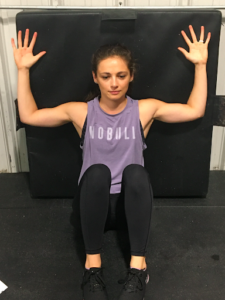
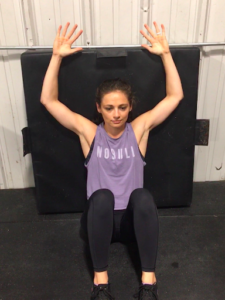
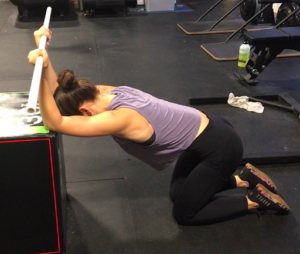
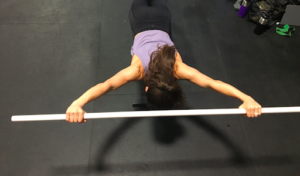

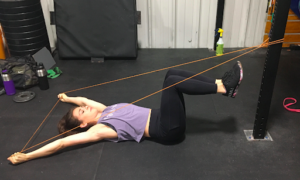
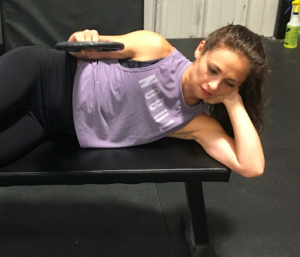



As a former competitive swimmer for 18 years, I wish I had known about these exercises and stretches 30+ years ago. I did suffer from the too much mobility and ended up having to surgery to repair ligament and tendon damage. It’s good to see coaches, trainers and doctors paying more attention to these types of injuries. But I wouldn’t trade my years for anything!
OK, swimdad here of a 17 old Jr. daughter. Great article and definitely the path we have been on for years with the preventive exercise and stretching. I want to warn parents and swimmers of what we found out about our daughter this year and are currently dealing with. Effort Thrombosis and also known as thoracic outlet syndrome. After an MRI we were told that Grace would need surgery to repair this. The potential for a blood clot was great and the pain and numbness she has felt for years was from a lack of blood flow. Take it from a dad who feels really bad about his daughter taking chances with her life, if you feel the treatment is… Read more »
Having been through about a million shoulder rehabs in my life with a bunch of them with elite overhead athlete sports medicine and physical therapists, this is excellent advice and the exercises are really the best ones.